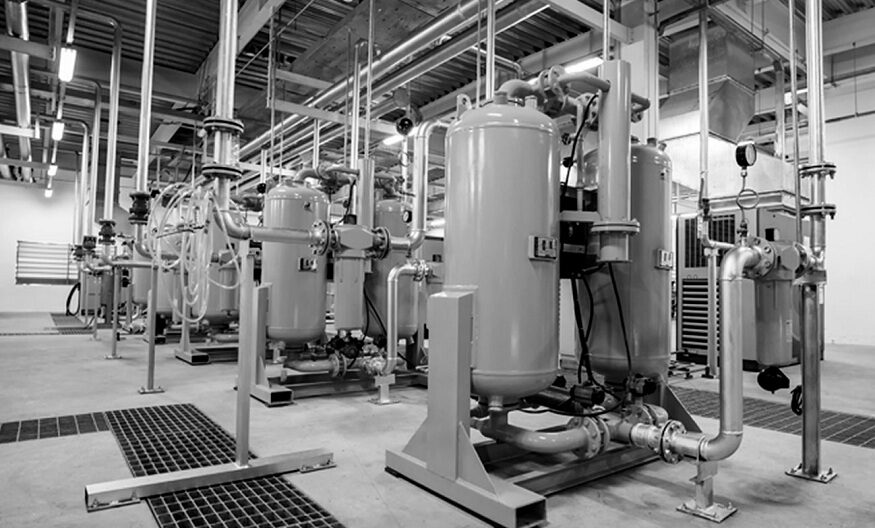
Many industrial processes benefit from Compressed Air. However, it is a suitable medium for energy transfer but can be inefficient. This article will discuss minimizing the risks associated with using Compressed Air. You will learn why it is necessary for specific manufacturing processes. Ultimately, compressed air can improve productivity and efficiency. First, you must understand the benefits of compact air services before deciding on your next air supply.
Compressed air is used in many industrial processes.
In many industries, compressed air is necessary for a variety of processes. Its use in these processes can facilitate the process, power tools, and help with automation. Compressed air is also an essential tool for expansion and planning. A new system can be added in the future to accommodate an increase in automation. Below are some of the common uses of compressed air.
Compressed Air Service is used in numerous industrial processes. For example, compressed air is used for pneumatic tools, blowing out tires, propelling paint through paint guns, cleaning metal surfaces, and operating robots on assembly lines. It is also used in welding and plasma cutting processes. Additionally, it is used in paint pumps in highly volatile environments. Compressed air is also used in military and civilian simulators. For example, it can be used to simulate high-speed movement in aircraft.
It is a medium for energy transfer.
Until recently, the only commercially available system for transferring energy was pumped hydro. However, with the development of Air Storage Energy Transfer (ASET) plants, energy is transferred between power plants and storage facilities by using compressed air as the transfer medium. The first such plant is currently being built in Huntorf, West Germany. This technology will allow power plants to run more efficiently and reduce the overall cost of production.
Compressed air is a medium for energy transfer in industrial processes, from atomizing paint to operating air cylinders. For example, locomotive trains are safer because compressed air brakes can apply braking force and stop the train. Large highway vehicles also utilize compressed air brakes for traction.
It is inefficient
There are several reasons why compressed air services are inefficient. First, they are commonly used for applications where more cost-effective energy sources are available. Examples include cabinet cooling, vacuum generation, and parts cleaning. Facility staff should always consider more efficient power sources before relying on compressed air. Additionally, there is a considerable risk of wasting energy, as it can be misused in misapplications.
Detecting leaks is an excellent first step toward improving compressed air efficiency. You can reduce energy loss by up to 10% by catching leaks. Leaks occur anywhere in your compact air system, including pressure regulators, shut-off valves, pipe joints, flanges, and thread sealants. Identifying potential leaks is essential to address them before causing further damage.
It can cause product spoilage.
When compressed air service pressures are unstable, they can lead to significant product spoilage and production downtime. In addition, if the compact air system is not maintained correctly, free water can sustain bacteria growth and be absorbed into the product. This can affect the quality and consistency of the finished product and ultimately affect profitability. Therefore, it is essential to monitor the system regularly and hire a certified compressed air service technician.
Microbial contamination: The presence of bacteria and molds in the compressed air system can adversely affect the health of people who breathe it. Although some molds are beneficial, many produce toxic products. These are called secondary metabolites. Moreover, Gram-negative bacteria can cause illness and even death. Consequently, it is essential to keep a close watch on compressed air services to prevent product spoilage. However, it is impossible to eliminate all the risks associated with compressed air.
It requires a level of air treatment.
Compressed air systems require a level of air treatment appropriate to their needs. This can include filtration and drying. Different types of manufacturing processes require different levels of air treatment. The quality of air should be monitored at critical points in the system. Air with excessive moisture or filtration can damage equipment or reduce system efficiency. Highly treated air is also necessary for certain end-use equipment. To ensure air quality for your compressed air systems, consult a professional.
There are three types of contaminants in compressed air. According to the DIN ISO standard 8573-1, the proper amount of each pollutant per cubic meter of compressed air is the quality class. The primary contaminants are solid particles, water, and oil. Three codes designate the quality class. During compressed air treatment, various processes interact to remove these contaminants. Germs and other microorganisms should be addressed in particular. However, limit values for bacteria, viruses, and other organisms are not defined by the DIN ISO standard 8573-1.
It is expensive
Although compressed air is easy to use and control, it is one of the most expensive utilities to maintain. It expends eight times the energy of chilled water and natural gas. Leakage can also be costly, costing an estimated $23 per thousand cubic feet. A leak of three cubic feet per minute can result in an annual bill of nearly $350,000. Fortunately, there are several ways to minimize this problem. One way is to use third-party detection to find leaks.
Several factors contribute to the high cost of compressed air. First, a business’s usage can quickly add up, especially in a large manufacturing environment. Therefore, it is helpful to do some calculations and estimate the costs involved. These calculations will help you determine the actual costs of compressed air. The average price of compressed air can reach a couple hundred thousand dollars a year, especially if the facility requires constant air. To determine whether compressed air services are worth the cost, compare how much it costs to operate the equipment.
